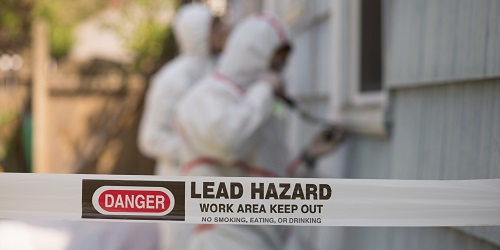Lead Exposure Reduction Program

Lead is a naturally occurring metal material that has been used since ancient times because of its availability, properties, and adaptability to many applications. Lead can be found as a solid as lead crystal or in automobile batteries, or as a liquid in paint or gasoline where it was used as a valve lubricant. It was commonly used in house paint and as the paint aged, deteriorated, or was removed it contaminated soil to become an exposure hazard. Lead has also found its way into water systems where it has contaminated drinking water and become an environmental hazard.
Lead is poisonous and can affect almost all bodily systems. Exposure typically results from inhalation or accidental ingestion (eating, drinking, and smoking) via contaminated hands, clothing, and surfaces. Workers may develop a variety of ailments, such as neurological effects, gastrointestinal effects, anemia, and kidney disease. Adults are mainly exposed to lead by breathing in lead-containing dust and fumes at work, or from hobbies that involve lead. Lead passes readily through the lungs or stomach into the blood and on to the major body organs.
Because of its toxicity, it is now highly regulated. Employers are required to protect workers from inorganic lead exposure under OSHA lead standards covering general industry (1910.1025), shipyards (1915.1025), and construction (1926.62). The lead standards establish a permissible exposure limit (PEL) of 50 µg/m3 of lead over an eight-hour time-weighted-average for all employees covered. The standards also set an action level of 30 µg/m3, at which an employer must begin specific compliance activities.
To get more information on the applicability of this program for a specific County operation please contact the corresponding departmental Safety Coordinator.
For further information on specific regulatory guidelines please refer to the link(s) below.
Cal-OSHA Lead Regulations (General Industry)
Cal-OSHA Lead Regulations (Construction)
Cal-OSHA Fact Sheet (Construction)
Centers for Disease Control (Lead Site)
Environmental Protection Agency Lead Information
National Institute of Occupational Safety and Health (Lead Site)